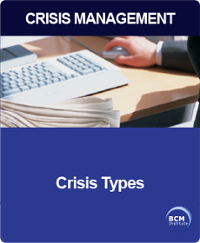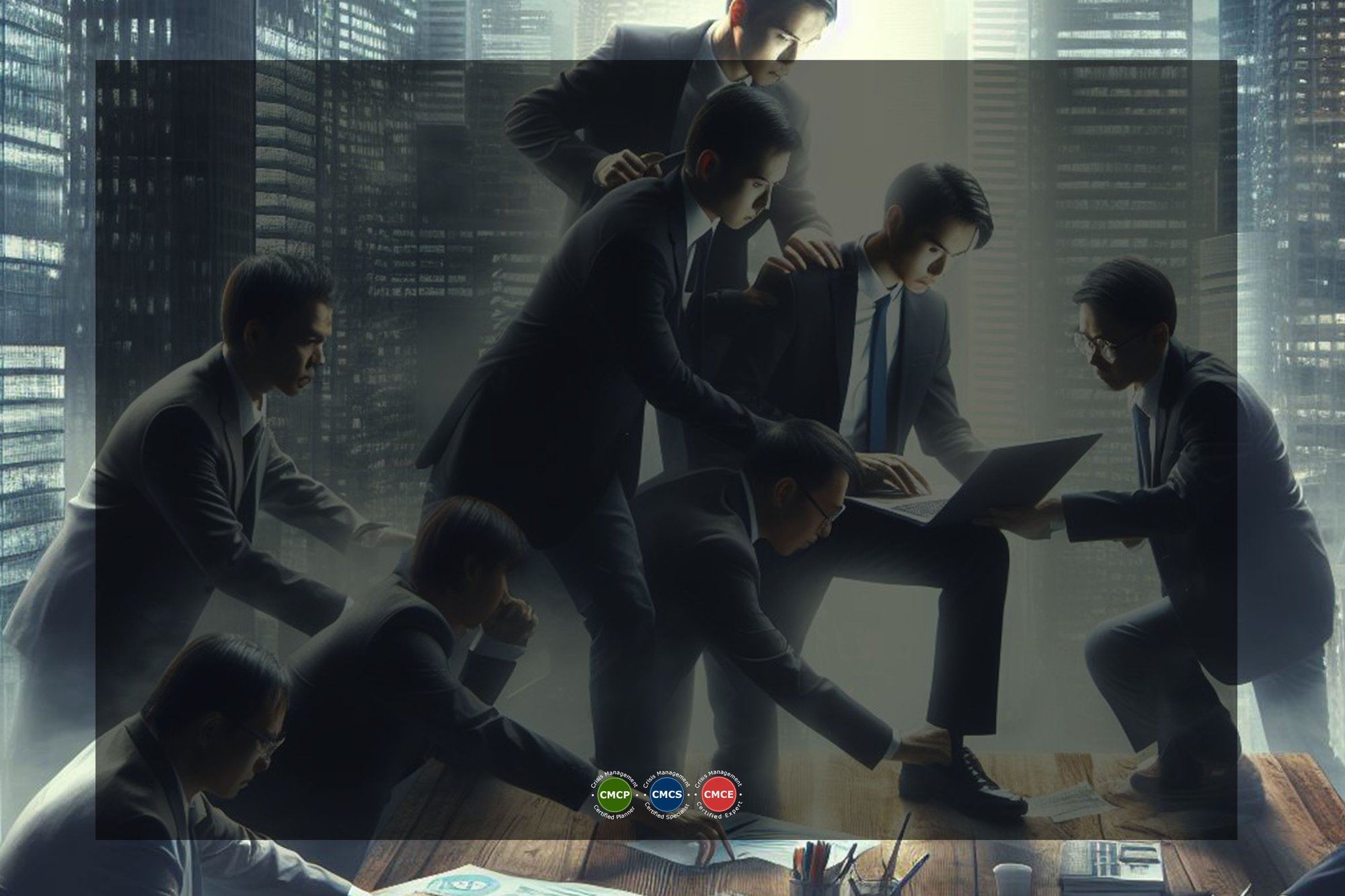 Crisis Scenario: Natural Threats
Crisis Scenario: Natural Threats
Here is another type of crisis scenario described in the "What Crisis or Crisis Scenario Should I Be Planning For My Organisation?" that is on the list to handle as part of crisis management and crisis communication. Click the right icon to read more.
Natural threats are environmental and natural disturbances leading to a natural crisis. They are usually beyond the scope of human control.
Introduction
Natural crises remain some of the most unpredictable and devastating threats to organisational continuity.
Despite advances in forecasting and early warning systems, events such as earthquakes, flash floods, or typhoons can occur with little notice, leaving companies vulnerable to infrastructure damage, operational shutdowns, and safety risks to employees and customers.
These disasters can cripple entire supply chains, disrupt transportation, and compromise essential utilities, including electricity, water, and communication networks.
Organisations must recognise that no sector or location is entirely immune to natural events. Even in regions with stable climates, global interdependencies mean that a natural disaster in one country can affect operations elsewhere through logistics delays or supplier outages.
The following table provides real-world examples of Natural Crisis Scenarios, serving as a resource to identify potential threats and initiate appropriate risk assessment, contingency planning, and resilience-building measures.
Definition: Crisis Scenario – Natural
Natural Crisis Scenarios refer to disruptive events caused by natural phenomena such as weather, geological, or environmental conditions that threaten the safety of people, damage physical infrastructure, and disrupt organisational operations.
These crises are often unpredictable and beyond human control, including events such as floods, earthquakes, typhoons, wildfires, and other extreme environmental conditions.
The impact can range from a temporary service interruption to large-scale business continuity threats that require long-term recovery.
Natural Threats (in Asia)
 Natural threats are often geographical; their likelihood and commonality depend primarily on the country where your organisation's operations are located.
Natural threats are often geographical; their likelihood and commonality depend primarily on the country where your organisation's operations are located.
Indonesia and Japan are at risk of earthquakes, Singapore has a good chance of getting haze from the Indonesian forest fires every year, Australia and California have wildfires, and China and the Philippines have to prepare for hurricanes, to name a few brief examples.
Thus, all unlikely threats must be omitted during risk assessment, and only those stapled to the organisation's country(s) of operations should be considered.
Some of the common threats listed under Natural Threats include, but are not limited to:
|
|
|
Threat Awareness
There are two basic types of Natural threats: Those with pre-awareness, where organisations know they're coming, and those where they do not. With natural threats like Hurricanes, Blizzards, and Tropical Storms, organisations usually have some degree of pre-warning to prepare for the impending disaster.
Other natural threats, such as haze, come slowly and have a comparatively negligible impact compared to other natural disasters. On the other hand, you have natural disasters that have limited to no pre-awareness, such as earthquakes, Wildfires, and Dust storms that can catch organisations unawares.
Thus, organisations must prepare and update their business continuity and crisis management plans before natural threats occur.
Example of Crisis Scenario: Natural
| No. | Example | Description |
|---|---|---|
| 1 | Flooding of Business Premises | Heavy rainfall or rising river levels inundate office buildings, data centres, or branches, halting operations. |
| 2 | Earthquake | A seismic event damages critical infrastructure, disrupts utilities, and endangers the safety of employees. |
| 3 | Tropical Storm or Typhoon | High winds and torrential rain cause property damage, transport disruption, and prolonged outages. |
| 4 | Landslide | Facilities located near hillsides or slopes are vulnerable to sudden ground movement, which can damage assets or compromise access routes. |
| 5 | Volcanic Eruption | Ash clouds or lava flows disrupt air travel, power supply, and operations in nearby locations. |
| 6 | Drought | Water shortages affect manufacturing processes, data centre cooling, and facility sanitation. |
| 7 | Tsunami | A coastal facility is destroyed or damaged by a tsunami triggered by undersea earthquakes. |
| 8 | Lightning Strike | A lightning strike can cause a fire or damage sensitive electronic equipment, leading to system outages. |
| 9 | Extreme Heatwave | Heat stress affects workforce health and disrupts outdoor operations or temperature-sensitive systems. |
| 10 | Severe Haze or Smog | Air quality issues from forest fires or pollution force office closures or reduce staff productivity. |
| 11 | Hailstorm | Large hailstones damage facility roofing, windows, and company vehicles. |
| 12 | Tornado or Windstorm | High-speed winds cause structural damage, disrupt transport, and lead to power outages. |
| 13 | Blizzard or Snowstorm | In cold climates, heavy snowfall disrupts logistics, employee commutes, and heating systems, causing significant challenges. |
| 14 | Wildfire | Nearby bushfires threaten buildings, necessitate evacuations, and compromise air quality. |
| 15 | Sinkhole Formation | Sudden ground collapse can damage property or render a facility unusable for an extended period. |
Conclusion
Natural disasters are inherently difficult to control, but their impact on organisations can be significantly reduced through proactive preparedness and resilient infrastructure.
Having comprehensive crisis management and business continuity plans—including evacuation procedures, emergency supplies, and disaster recovery protocols—is essential for minimising operational and human impact during such events.
Incorporating natural disaster scenarios into regular risk assessments and resilience exercises helps ensure that organisations can adapt quickly and recover efficiently.
By understanding the nature and implications of various environmental threats, businesses can enhance their ability to maintain continuity, protect their workforce, and ensure their long-term viability, even in the face of nature’s most severe disruptions.
More Information About Crisis Management Blended/Hybrid Learning Course
To learn more about the course and schedule, click the buttons below for the CM-300 Crisis Management Implementer [CM-3] and the CM-5000 Crisis Management Expert Implementer [CM-5].







![[BL-CM] [5] Register](https://no-cache.hubspot.com/cta/default/3893111/82024308-16f4-4491-98be-818a882c6286.png)

![Email to Sales Team [BCM Institute]](https://no-cache.hubspot.com/cta/default/3893111/3c53daeb-2836-4843-b0e0-645baee2ab9e.png)




![Banner [BL-5-Catalog] What Expert Level Blended Learning Courses that are Available?](https://no-cache.hubspot.com/cta/default/3893111/f39d2d89-53b2-4f11-982f-dd3462f224ac.png)
![[BL-3-Catalog] What Specialist Level Blended Learning Courses that are Available?](https://no-cache.hubspot.com/cta/default/3893111/1073197e-c1bd-47d3-97dc-32e7533619b7.png)

